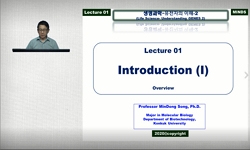Marine sediments are a microbial biosphere with an unknown physiology, and the sediments harbor numerous distinct phylogenetic lineages of Bacteria and Archaea that are at present uncultured. In this study, the structure of the archaeal and bacterial ...
http://chineseinput.net/에서 pinyin(병음)방식으로 중국어를 변환할 수 있습니다.
변환된 중국어를 복사하여 사용하시면 됩니다.
- 中文 을 입력하시려면 zhongwen을 입력하시고 space를누르시면됩니다.
- 北京 을 입력하시려면 beijing을 입력하시고 space를 누르시면 됩니다.



Microbial Community Composition in the Marine Sediments of Jeju Island: Next-Generation Sequencing Surveys = Microbial Community Composition in the Marine Sediments of Jeju Island: Next-Generation Sequencing Surveys
한글로보기https://www.riss.kr/link?id=A101896847
-
저자
( Heebok Choi ) ; ( Hyeon Woo Koh ) (Jeju National University) ; ( Hongik Kim ) (Vitabio Inc.) ; ( Jong Chan Chae ) (Chonbuk National University) ; ( Soo Je Park ) (Jeju National University)

- 발행기관
- 학술지명
- 권호사항
-
발행연도
2016
-
작성언어
Korean
- 주제어
-
등재정보
SCIE,SCOPUS,KCI등재
-
자료형태
학술저널
-
수록면
883-890(8쪽)
- DOI식별코드
- 제공처
-
0
상세조회 -
0
다운로드
부가정보
다국어 초록 (Multilingual Abstract)
Marine sediments are a microbial biosphere with an unknown physiology, and the sediments harbor numerous distinct phylogenetic lineages of Bacteria and Archaea that are at present uncultured. In this study, the structure of the archaeal and bacterial communities was investigated in the surface and subsurface sediments of Jeju Island using a next-generation sequencing method. The microbial communities in the surface sediments were distinct from those in the subsurface sediments; the relative abundance of sequences for Thaumarchaeota, Actinobacteria, Bacteroides, Alphaproteobacteria, and Gammaproteobacteria were higher in the surface than subsurface sediments, whereas the sequences for Euryarchaeota, Acidobacteria, Firmicutes, and Deltaproteobacteria were relatively more abundant in the subsurface than surface sediments. This study presents detailed characterization of the spatial distribution of benthic microbial communities of Jeju Island and provides fundamental information on the potential interactions mediated by microorganisms with the different biogeochemical cycles in coastal sediments.
동일학술지(권/호) 다른 논문
-
- 한국미생물 · 생명공학회
- ( Jun Young Kim )
- 2016
- SCIE,SCOPUS,KCI등재
-
The 14-3-3 Gene Function of Cryptococcus neoformans Is Required for its Growth and Virulence
- 한국미생물 · 생명공학회
- ( Jingbo Li )
- 2016
- SCIE,SCOPUS,KCI등재
-
- 한국미생물 · 생명공학회
- ( Yao Zhou )
- 2016
- SCIE,SCOPUS,KCI등재
-
Screening Rice Cultivars for Resistance to Bacterial Leaf Blight
- 한국미생물 · 생명공학회
- ( Agaba Kayihura Fred )
- 2016
- SCIE,SCOPUS,KCI등재




 ScienceON
ScienceON KISS
KISS






